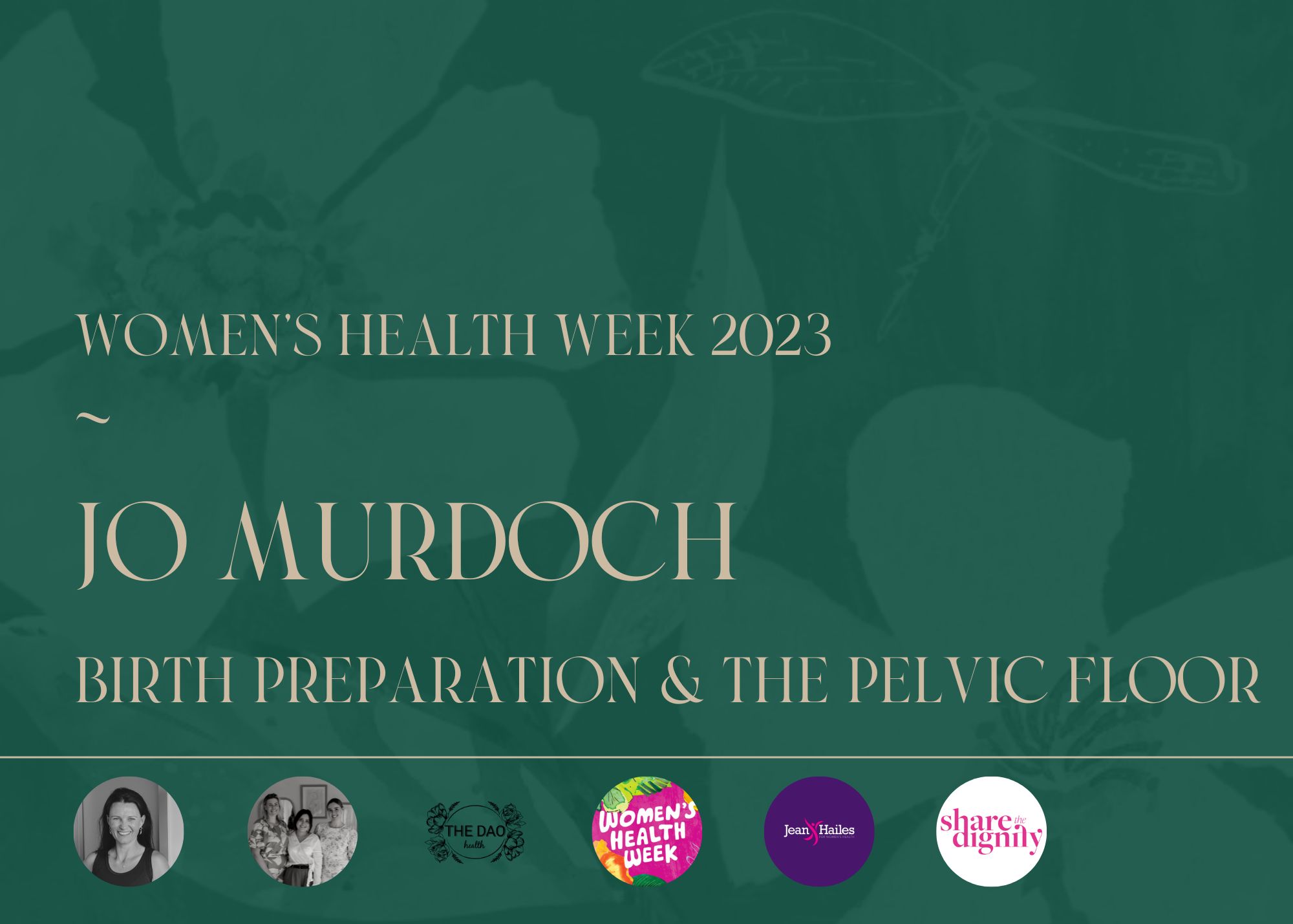The Dao Does X Jean Hailes Women’s Health Week 2023 Journal Series ~
How Birth Preparation Supports Your Pelvic Floor with Pelvic Health & Musculoskeletal Physiotherapist Jo Murdoch ~
Acupuncture provides a low-risk intervention for common signs and symptoms in pregnancy in all trimesters and in the postpartum period. At The Dao Health, Acupuncture is recommended in pregnancy through all four trimesters. In Trimester One Acupuncture is recommended to reduce morning sickness, decrease fatigue and support mental health. In Trimester Two and Three Acupuncture plays a beneficial role in managing musculoskeletal pain such as Sciatica and Pubic Pain, reducing reflux, insomnia and fluid retention. Labour Preparation Acupuncture in the final weeks of pregnancy is well-researched to prepare women for childbirth and for the most efficient birth possible by ripening the cervix and supporting the optimal position of the baby. In addition to the series of Labour Preparation treatments are learning how to apply Acupressure throughout labour to support labour efficiency and pain relief. For postpartum support, the first forty days – otherwise known as the golden month is a time in Traditional Chinese Medicine that is critical to support the Mother post birth, to nourish blood, support milk supply and birth recovery.
It is important to note that Acupuncture in pregnancy should be practiced by an AHPRA-registered Acupuncturist and Traditional Chinese Medicine practitioner who is trained in Women’s Health and Pregnancy. Please listen to this episode from Integrating Chinese Medicine discussing Is Acupuncture Safe During Pregnancy?
When treating patients throughout their pregnancies at The Dao Health we often support women in an integrative healthcare model from preconception care through pregnancy, into birth and postpartum. An integral member of this healthcare model is a Women’s Health Physiotherapist who supports women and their pelvic floor to prepare for pregnancy, birth and postpartum recovery. We often work with Jo Murdoch and the team at The Physiotherapy Clinic to support our patients throughout their pregnancies and to prepare for birth with the Born Ready course which provides helpful and practical education for labour and active birth for both mother and birth partner.
~
Pelvic Health & Musculoskeletal Physiotherapist, Jo Murdoch ~
Jo Murdoch is a pelvic health and musculoskeletal physiotherapist. She is the director of The Physiotherapy Clinic and has a Masters of Women’s Health Medicine. Jo is also completing a Masters by research investigating the impact of pelvic floor distensibility on birth outcomes and is a first-year medical student.
~
1. What does Women’s Health mean to you?
To me, women’s health means happy, healthy, strong communities. Women’s health means proactive, preventative health care. Women’s health means advances in research and health care.
2. Throughout pregnancy, why is it important to support and prepare your pelvic floor for labour, birth and postpartum?
The pelvic floor includes both muscles and fascia that sit on the inside of your pelvis supporting your organs. The pelvic floor has the capacity to stretch enormously during birth. Sometimes we find for various reasons, the pelvic floor is not as distensible as we would like, and therefore does not stretch well during birth. It is good to understand your pelvic floor during pregnancy, from 20 weeks. At this point, your pelvic health physiotherapist can help you establish if you need to work on your pelvic floor in preparation for your birth. In addition, it is worth noting here, that if you are suffering from any incontinence or pelvic girdle pain, we recommend not putting this down to simply being pregnant, but rather seek help. These symptoms are signs that something may not be quite right with your pelvic floor.
Once the pelvic floor stretches to allow the birth canal to open during vaginal delivery, it can take time to return back to its normal resting state. We highly recommend you have your pelvic floor muscle functions assessed at approximately 6 weeks postpartum. Once again, your pelvic health physiotherapist will then be able to guide you towards any rehabilitation you might need. This is important to prevent problems in the future such as pelvic organ prolapse and urinary and faecal incontinence.
3. For pregnant women planning for a vaginal birth, can you please explain active birthing and the benefits?
Labour and birth is by no means a passive activity! Whilst our bodies are hormonally primed to labour and give birth naturally, there are many birth skills you can learn to ensure the process goes well.
Labour and birth is like a marathon, but in this marathon, you start out slow and steady and increase the speed and intensity as the marathon goes on. Your uterus is a muscle that contracts over and over again, and builds in intensity and time as the labour progresses. Participating in activity during these contractions is very helpful. For example, choosing the position that works best for you, using active strategies with other parts of your body to distract you from the intensity of the uterus are both very helpful techniques.
Your baby is actively trying to move its way out of your uterus and down through your pelvis via the vaginal/birth canal. Keeping active keep your pelvis open to help allow this passage to be as easy as possible for the baby to pass through.
4. What are the benefits of learning how you cope with pain and learning your own pain management strategies before labour? How do you go through this in the Born Ready course?
Labour is painful, and becomes more painful as the labour progresses. This is simply a product of fatigue of the uterus. Pain does have a purpose in labour, however, it has been shown to keep women more focused on the task and thus birth more efficiently.
Every body has a unique perception of pain. Every body has a unique threshold for pain. Everybody, therefore will utilise pain relieving strategies in their own unique way. It is useful to figure out what works best for you. We highly recommend trialling a labour TENS machine, it has very good clinical and scientific efficacy for reducing pain, but the sensation is unique and a small percentage of women don’t like the sensation, so worth trialing first. Breathing techniques work beautifully for some, but do nothing for others, visualisation, mantras, and vocalising help many but not others, and finally, active birth skills, utilising other parts of your body to move to distract you from the pain work very well for many.
In our Born Ready course, we take women on a journey through all options to feel the difference of each technique – we generate pain in Women’s legs by making them squat for 1 minute per technique! Cruel to be Kind!
5. Why is it important to have an informed birth partner?
Labour and Birth is rarely straightforward. We would argue it is important to equip yourself with as much knowledge as you can to understand all the possible scenarios. It is important to build your plan, your best-case scenario plan. It is then useful to plan your thoughts on other scenarios, so if it heads down that path you are prepared.
When you are in labour, it is difficult to think straight. In fact, it is usually better if you don’t engage your brain and think too much, but rather surrender and let your body do the work. Therefore it is essential your birth partner can do the thinking. The only way they can do the thinking well and in line with your plans is to be well-informed before the big day.
~
Interviewed by Elizabeth Cullen
(BHlthSc (TCM), MWomHMed)


